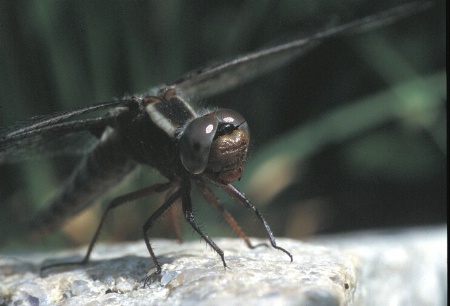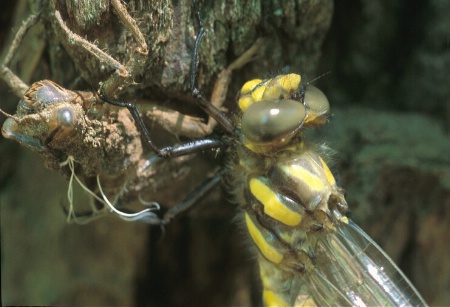
Jim Bennett |
|
Reversing Lenses with a Nikon
I've tried some macro photography and want to get serious with it. My subjects are insects. Does anyone have experience with upwards of 2:1 ratios using the Nikon? Does anyone know of any resources for doing this cheaply? I've considered the Nikon 105mm micro lens, but I don't think I'll be happy with the 1-1.6:1 that I can get with it. How about the availability of reversing rings, and which lenses combinations work well?
June 18, 2004
|
|
|
Bob Cammarata |
|
|
|
|
|

Black-Eyed Susan
Nikkor 55 mm with 36mm extension tube, Provia 100
Bob Cammarata
|
|
|
|

Dragonfly
Nikkor 55 mm with 36mm extension tube, Provia 100
Bob Cammarata
|
|
|
|

Emerging
Nikkor 55 mm with 36 mm extension tube, Provia 100
Bob Cammarata
|
|
|
|
The 105mm Nikkor is a good choice. I've read great reviews, but have never used one. I have a 55mm Micro-Nikkor which only achieves 1:2 (1/2 life-size), but I can get much larger images by adding extension tubes between the camera body and the lens. This is probably the most economical way to get greater than life-size images. Since extension tubes are basically hollow tubes with no glass elements, the optical integrity of your prime lens won't be compromised (as it is with those magnifying filters which screw onto the front of the lens).
The tubes are commonly sold as a set of three (usually 12mm, 20mm, and 36mm) and are available in a variety of lens mounts. They can be used singly, or stacked together for getting super-close.The three enclosed examples were taken with a Nikkor 55mm and a 36mm extension tube. As with all macro photography, the closer you get, the less depth of field you will have. There will also be less workable light to aid in focusing (which should be done manually). When using extension tubes to photograph insects, I've found it best to set my lens to the minimum focus distance, then get into shooting position and move the camera and tripod back and forth to critically focus on an eye or an antennae of the subject. Hope this helps.
June 17, 2004
|
|
|
Jim Bennett |
|
Thanks for your help, Bob. Your pics are great!
June 18, 2004
|
|
|
Mark O'Brien |
|
Rather than give you a lengthy answer, see my site on macrophotography -- it will answer your questions.
http://insects.ummz.lsa.umich.edu/~mfobrien/macro/
June 22, 2004
|
|
|
Norman Fortin |
|
Just a comment on Bob C.'s answer.
He mentioned extension tubes. If you happen to have a 55mm lens, try to get an M2 extension tube. It was designed and made for the 55mm lens to get a 1:1 ratio that you are looking for.I get great results from it. Just remember that when using extension tubes,you must open up one or more stops, depending on length. If you have TTL metering, the camera will automatically take care of that for you.
June 22, 2004
|
|
|
|
Log in to respond or ask your own question.
|